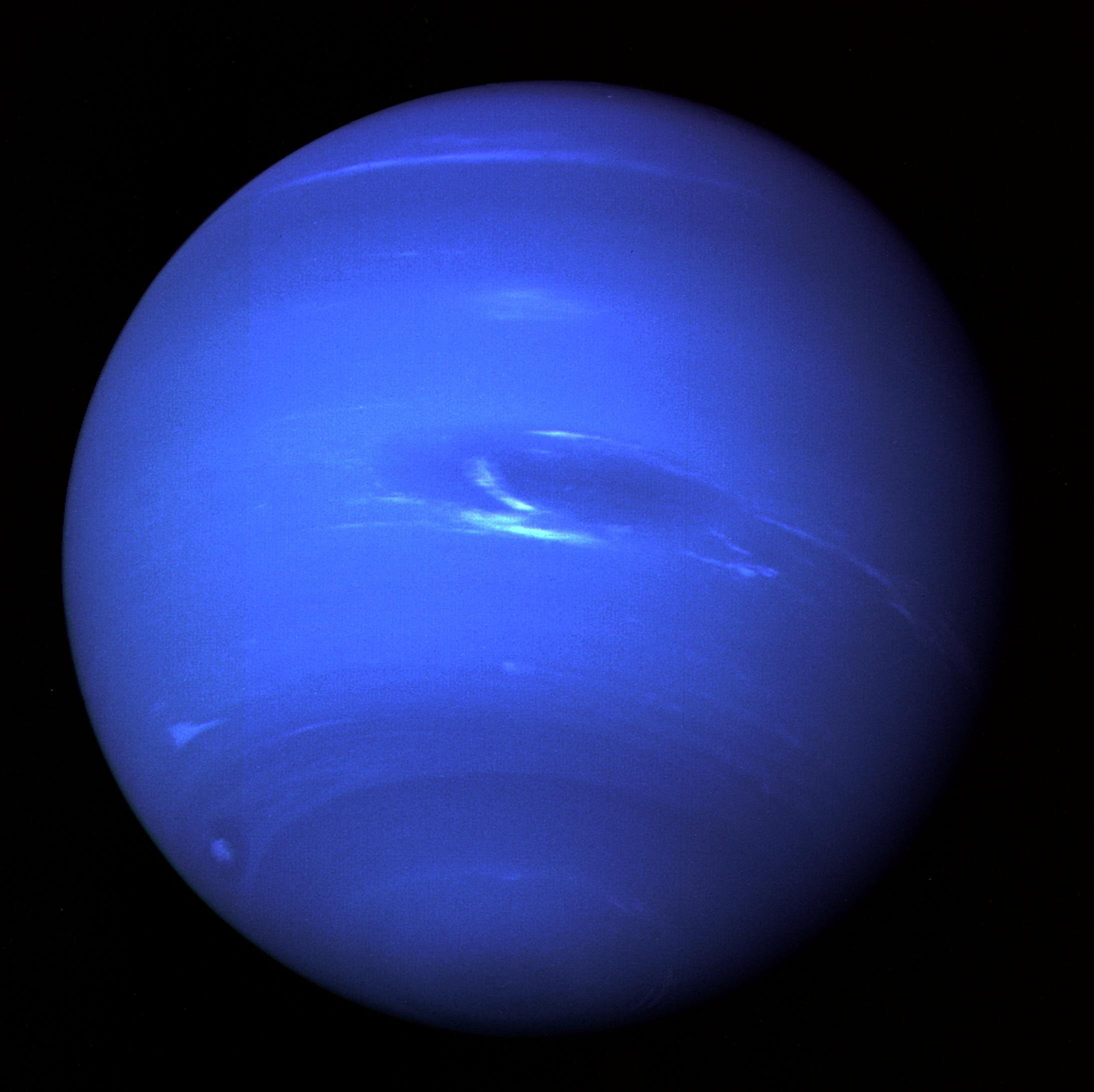Of all the planets in the Solar System, Neptune is the most distant. It is also the most "peaceful", at least in appearance. And for good reason, this "ice giant" is coated in a bluish atmosphere. But why such a color?
Positioned about 4.5 billion kilometers from the Sun, Neptune is the only planet invisible to the naked eye. It was thus discovered by deduction in 1846 by Johann Galle, on the predictions of the French astronomer Alexis Bouvard. The latter had indeed noted unexplained gravitational disturbances in the orbit of Uranus. Mathematical calculations by astronomer Urbain Le Verrier also made it possible to locate the planet.
However, at the time, no one had any idea what Neptune looked like. The planet, which is 58 times larger than Earth and about 17 times more massive , was first visited in 1989 by NASA's Voyager 2 probe, which is now sailing in interstellar space. During its flyby, the ship had then captured several photos of the giant, finally revealing its oceanic hue to us for the first time. Indeed, seen through a telescope, the eighth planet of the Solar System appears to us of an azure blue.
To explain this apparent color, we must look at its atmosphere, which is mainly composed of three gases:hydrogen (80%), helium (19%) and methane (1%).
Neptune's clouds are also known to vary with altitude, just like on Earth. More than 4.5 billion kilometers from the Sun, the planet's methane then condenses in the upper layers of the atmosphere due to freezing temperatures.
Despite making up a relatively small proportion of Neptune's atmosphere, this gas absorbs red wavelengths above 600 nm, reflecting hence a "colder" shade. It is therefore primarily responsible for the color displayed by Neptune.
However, Neptune's azure appearance can only be explained by this gas. Indeed, the atmospheric methane content of the planet is similar to that of Uranus. However, these two worlds do not reflect the same colors:Uranus displays a color closer to aquamarine. Thus, other chemical species present in Neptune's atmosphere are also responsible for its particular hue. However, they have not yet been identified.

A few years ago, NASA mentioned its intention to send an orbiter and an atmospheric probe to Neptune and Uranus by 2030. The idea would be to study precisely how these two giants were formed. This type of analysis could allow astronomers to learn more about the thousands of exoplanets listed to date, most of which are the size of Neptune.
Note that for now, these are just ideas on the table. In addition, there is also talk of sending a probe to Triton, its main moon. If approved (we will know next year), this mission could be launched in October 2025 and finally arrive on site in 2038.